Teething is a challenging phase for both dachshunds and their owners. This process, where puppies lose their baby teeth to make way for adult teeth, can cause significant discomfort for your furry friend. Understanding the Dachshund teething phase, knowing how long it lasts, and having strategies to ease the pain can make this period much more manageable. In this blog post, we’ll explore various tips and tricks to help your dachshund during their teething phase.
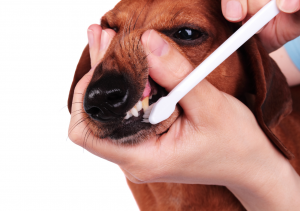
Understanding Dachshund Teething
Teething in dachshunds typically begins around three to four weeks of age, when their baby teeth start to emerge. By the time they are eight weeks old, most of their baby teeth will have come in. The teething process continues until they are about six months old, during which their baby teeth fall out, and adult teeth grow in. So, how long are dachshunds teething for? The entire process can last up to six months, but the most intense teething usually occurs between three and five months of age.
Signs Your Dachshund is Teething
Recognizing the signs of teething can help you provide timely relief. Common signs include:
- Chewing on furniture, shoes, and other objects
- Drooling more than usual
- Swollen, red gums
- Slight bleeding from the gums
- Increased irritability or fussiness
- Decreased appetite
Best Chew Toys to Deal With Dachshund Teething
Providing the right chew toys can make a world of difference during the teething phase. Here are three highly recommended toys that can help soothe your dachshund’s gums:
- Carrot Doxie Toy
- This adorable carrot-shaped toy is designed specifically for dachshunds. Its soft yet durable texture makes it perfect for teething puppies. The toy is made from safe, non-toxic materials, ensuring it’s gentle on your puppy’s gums while being tough enough to withstand enthusiastic chewing.
- Benefits: The carrot shape is not only fun but also practical. The unique texture helps massage your dachshund’s gums, providing relief from teething pain. Plus, the vibrant color makes it easy to spot around the house.
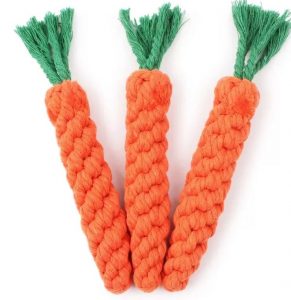
- Dachshund Toothbrush Chew Toy
- This innovative chew toy doubles as a dental aid. It features a brush-like design that helps clean your puppy’s teeth as they chew. Made from durable rubber, it can withstand heavy chewing while promoting good oral hygiene.
- Benefits: The bristles on the toy help remove plaque and tartar buildup, keeping your dachshund’s teeth clean and healthy. It’s a great way to introduce dental care early on and can reduce the need for professional cleanings down the line.
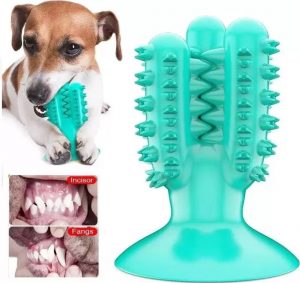
- Doxie Cactus Interactive Chew Toy
- This interactive cactus toy is perfect for teething puppies who need a bit more stimulation. It’s designed with various textures and squeakers to keep your dachshund engaged and entertained.
- Benefits: The multiple textures help soothe sore gums, while the squeakers provide auditory stimulation, making playtime more exciting. This Dachshund toy can also be frozen for added relief, offering a cool, soothing sensation to your puppy’s aching gums.
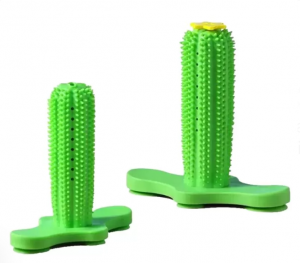
Tips to Help Your Dachshund During Teething
1. Provide Appropriate Chew Toys
Chewing is a natural behavior for teething puppies as it helps to alleviate gum pain. Providing appropriate chew toys can prevent your dachshund from gnawing on furniture and other household items. Here are some tips on selecting the right chew toys:
- Durability: Choose toys made from sturdy materials that can withstand your dachshund’s strong jaws.
- Size: Ensure the toys are an appropriate size to prevent choking hazards.
- Texture: Different textures can help soothe your puppy’s gums in various ways.
Some popular chew toys for teething dachshunds include rubber toys, nylon bones, and rope toys.
2. Use Cold Rubber Toys
Cold therapy is a highly effective method to numb the pain associated with teething. Cold rubber toys can provide immediate relief to your dachshund’s sore gums. You can place rubber toys in the freezer for a few hours before giving them to your puppy. The cold temperature helps to reduce inflammation and numb the gums, providing temporary relief.
Frozen washcloths are another simple and effective solution. Soak a washcloth in water, twist it, and freeze it. The cold, textured fabric can offer both comfort and entertainment for your teething puppy.
3. Apply Dental Gels
Dental gels specifically designed for teething puppies can soothe sore gums and reduce discomfort. These gels often contain natural ingredients like chamomile and aloe vera, which have anti-inflammatory and pain-relieving properties. When using dental gels:
- Follow the manufacturer’s instructions for application.
- Apply the gel directly to your puppy’s gums using a clean finger or a cotton swab.
- Use the gel sparingly to avoid any potential adverse reactions.
4. Maintain Regular Dachshund Teeth Cleaning
Maintaining good oral hygiene is crucial during the teething phase. Regularly cleaning your dachshund’s teeth can help prevent infections and promote overall dental health. Here’s how you can keep your puppy’s teeth clean:
- Start Early: Introduce tooth brushing at an early age to get your dachshund accustomed to the process.
- Use Dog-Specific Toothpaste: Human toothpaste can be harmful to dogs, so always use toothpaste formulated for pets.
- Gentle Brushing: Use a soft-bristled toothbrush and brush gently to avoid hurting your puppy’s sensitive gums.
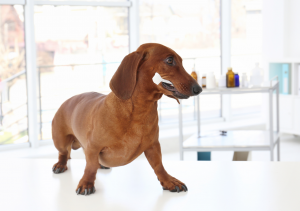
How to Distract Your Teething Dachshund
Distraction can be an effective way to take your puppy’s mind off the discomfort of teething. Engaging your dachshund in various activities can reduce their focus on the pain and prevent them from chewing on inappropriate items. Here are some distraction techniques:
- Playtime: Engage your puppy in interactive play sessions with toys.
- Training: Teach your puppy basic commands and tricks. This mental stimulation can help tire them out.
- Socialization: Arrange playdates with other puppies or take your dachshund to a dog park to socialize and expend energy.
Foods to Soothe Teething Pain
In addition to toys and gels, certain foods can help soothe your dachshund’s gums during the teething phase. Here are some options:
- Frozen Carrots: Carrots are a healthy and crunchy snack that can provide relief when frozen.
- Frozen Fruit: Small pieces of frozen fruit like blueberries or strawberries can be a tasty and soothing treat.
- Ice Cubes: Some puppies enjoy chewing on ice cubes, which can help numb their gums.
When to Consult a Vet
While teething is a natural process, there are instances when you should consult a veterinarian:
- Persistent Pain: If your puppy seems to be in severe pain despite your efforts to alleviate it, seek veterinary advice.
- Excessive Bleeding: A small amount of bleeding is normal, but if you notice excessive or prolonged bleeding, consult your vet.
- Retained Baby Teeth: Sometimes baby teeth don’t fall out as they should. If you notice double rows of teeth or a baby tooth that hasn’t fallen out by the time the adult tooth is in, your vet may need to remove it.
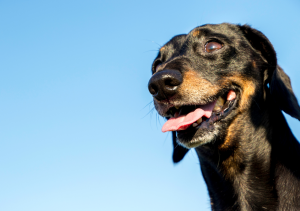
The Importance of Patience and Consistency
Teething can be a trying time for both you and your dachshund, but patience and consistency are key. Here are some final tips to help you navigate this phase:
- Stay Positive: Remember that teething is temporary and your puppy will soon have a full set of adult teeth.
- Consistency is Key: Stick to a routine with dental care and chew toys to help your dachshund understand what is acceptable to chew on.
- Offer Comfort: Provide lots of love and comfort to your puppy during this time. Gentle massages and cuddles can go a long way in easing their discomfort.
READ ALSO: 5 Common Reasons Why Do Dachshunds Shake Their Ears
Dachshund Teething Phase: Conclusion
The dachshund teething phase can be a challenging period, but with the right strategies, you can help your puppy navigate it more comfortably. Providing appropriate chew toys, using cold rubber toys, applying dental gels, and maintaining good oral hygiene are all essential steps.Besides, offering soothing foods, engaging in distraction techniques, and knowing when to consult a vet can make a significant difference. Remember, patience and consistency will see you through this phase, resulting in a happy and healthy dachshund with a beautiful set of adult teeth.
READ ALSO: Dachshund Burrowing: What’s The Reason Behind This Behavior?
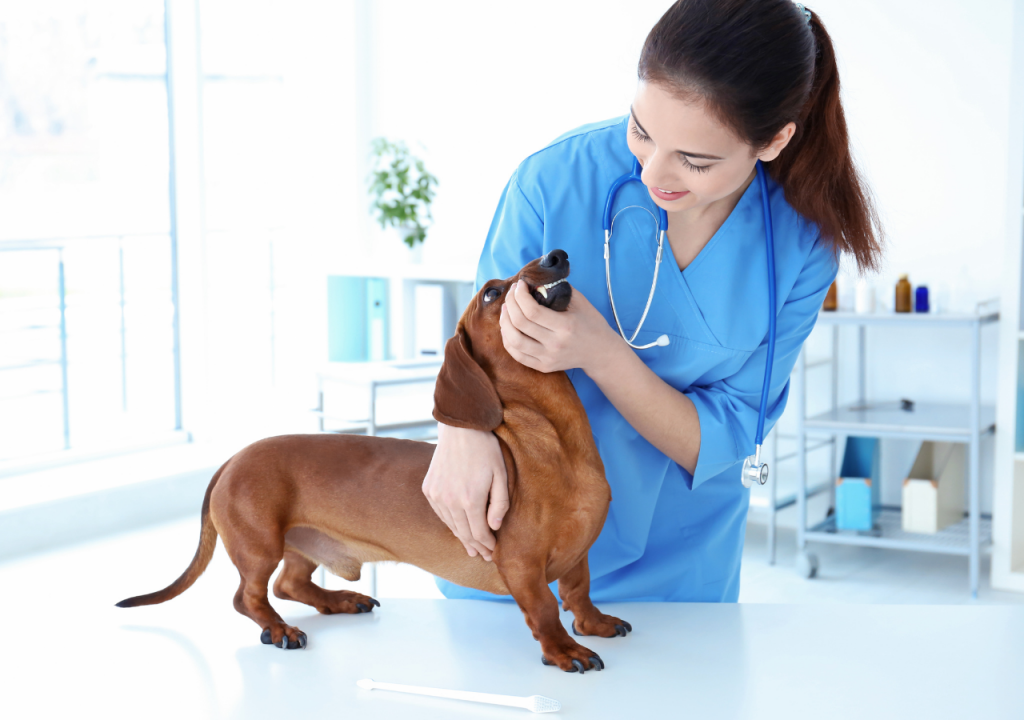
Pingback: Are Dachshunds Good With Other Dogs? Things To Know
Pingback: Dachshund Gifts For Her: Top 7 Picks To Put a Smile On Her Face